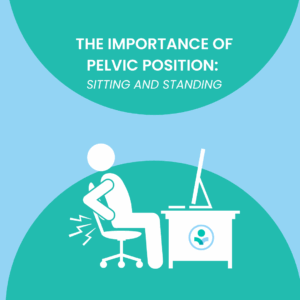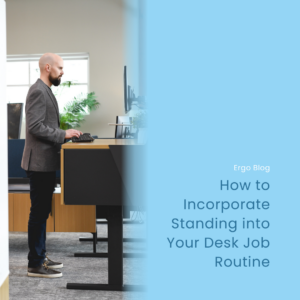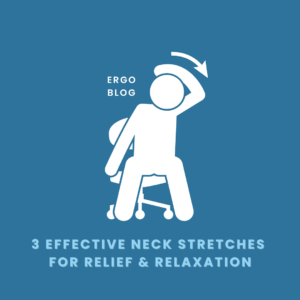Updated: Jan 5, 2023
3 Ergonomic Tips to Avoid Poor Posture
Posture – the position in which we hold our bodies, is something that affects our lives daily. We rely on our postural muscles to maintain balance, counter the effects of gravity, and help us move in ways that are the least straining for our supporting muscles and ligaments. Having good posture can help you have more energy, improve self-esteem, breathe easier, reduce headaches, decrease your risk of injury and boost productivity.
Improving poor posture is possible. However, it does take time and commitment. There is no quick and easy fix with the latest and greatest gadget or device. Surprisingly, the posture we have has a lot to do with our daily habits. Spending a few moments each day to improve your posture can help lead to better habits and your future self will thank you.
Hip Position
One of the most common postures I see when doing ergonomic assessments is a slouched posture with the pelvis in a posterior tilt position. This causes us to have a forward flexed spine and neck as well. It can also limit space for our digestive organs and lungs. When this happens, it may lead to us having digestive issues and difficulty breathing and along with feelings of discomfort in our musculoskeletal system. The optimal position is for your pelvis to be in a neutral position with your back fully supported. Avoid sitting too far forward or perched as this can tilt your pelvis in an anterior position. When our pelvis sits in a neutral position our muscles, organs, and skeletal system can work the most efficiently. In order to be fully supported with a neutral pelvis, be sure to use the right chair for you and make sure your desk is set up correctly (link to other articles).
Screen & Font Size
After you check your hip position, look at your monitor size, the font size, and your monitor. Our posture will always follow our vision. That means if we cannot see something as clearly as our brain would like, we will naturally change our posture to improve this. If the settings on our monitors or the monitor itself are too small, then we will most likely lean forward so we can see better. If you are using a single monitor, the ideal size is 27”. A dual monitor set-up should include two 24” monitors. The ideal distance that a single monitor is from your eyes is about an arm’s length. Two monitors would be positioned slightly further back from this point.
Even though you might be able to pass a vision test and you can see all the needed content at this distance, your eyes may still strain which will cause you to lean forward. The next step is to go to your display settings and magnify the content or font on your screen. Every once in a while I come across some apps that do not respond well to this magnification. Always be sure to check with your IT department or consultant if you have questions about the compatibility of magnification and certain apps. When the content on the screen is magnified, this will force you to sit back in your chair which then allows you to have a neutral pelvis and neck position, while using the supports from your chair.
One exercise that can help with keeping your neck in a neutral position is chin tucks. Moving your chin back to create a double chin and holding this for 3 seconds is beneficial. Completing 10-15 repetitions several times throughout your workday can create a new habit of holding your head in a more neutral posture.
Static Positions – Sitting or Standing Too Long
Once we develop better postural habits and routines are bodies are great at maintaining this as long as we continue to be mindful of our position. Being in one position for too long can cause our muscles to fatigue which again leads to poor posture. One of the goals of ergonomics is to move frequently throughout your workday. For starters, this means getting up from a sitting position at least once per hour. Walking around the office or stretching are great options.
If you have a height-adjustable desk and have the option to move more frequently, try implementing the 20-8-2 Rule. The goal for this rule is to sit for 20 minutes, stand for 8 minutes and then stretch and move about for 2 minutes. This would then be repeated every 30 minutes throughout your workday.
Standing for too long can also have negative effects on our posture. Just as we fatigue from sitting for too long, we can also fatigue from standing for too long. Consider other positions in your workday such as sitting on a stool for short periods of time or stretching. Always make sure your work surface is at the right height for you so you can keep your elbows close to your sides at 90-100 degrees of flexion. This zone is often referred to as the comfort zone. Frequent reaching beyond this point can lead to poor posture and muscle fatigue. If you have a height-adjustable desk consider techniques from a previous blog for positioning when standing.
Proper footwear and shoe support also play a large role in our sitting and standing tolerance. Finding the right shoe and support for your needs can help improve your comfort level when you are sitting and standing.
Improving posture takes time and commitment. Find one new habit to work on at a time so it is not too overwhelming. It gets easier with practice. Once you accomplish these goals you can move on to strengthening your core so your muscles don’t fatigue as fast.
Check out our YouTube video below for a visual representation of the blog!



